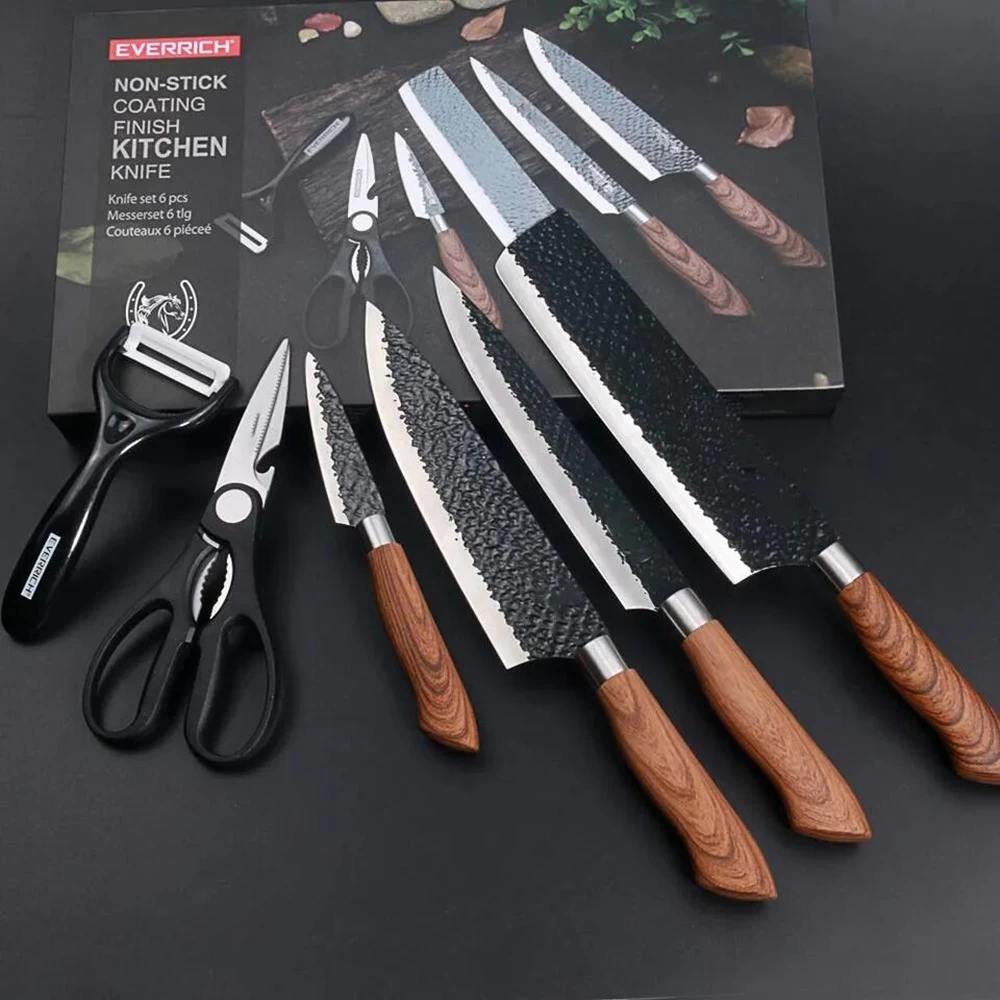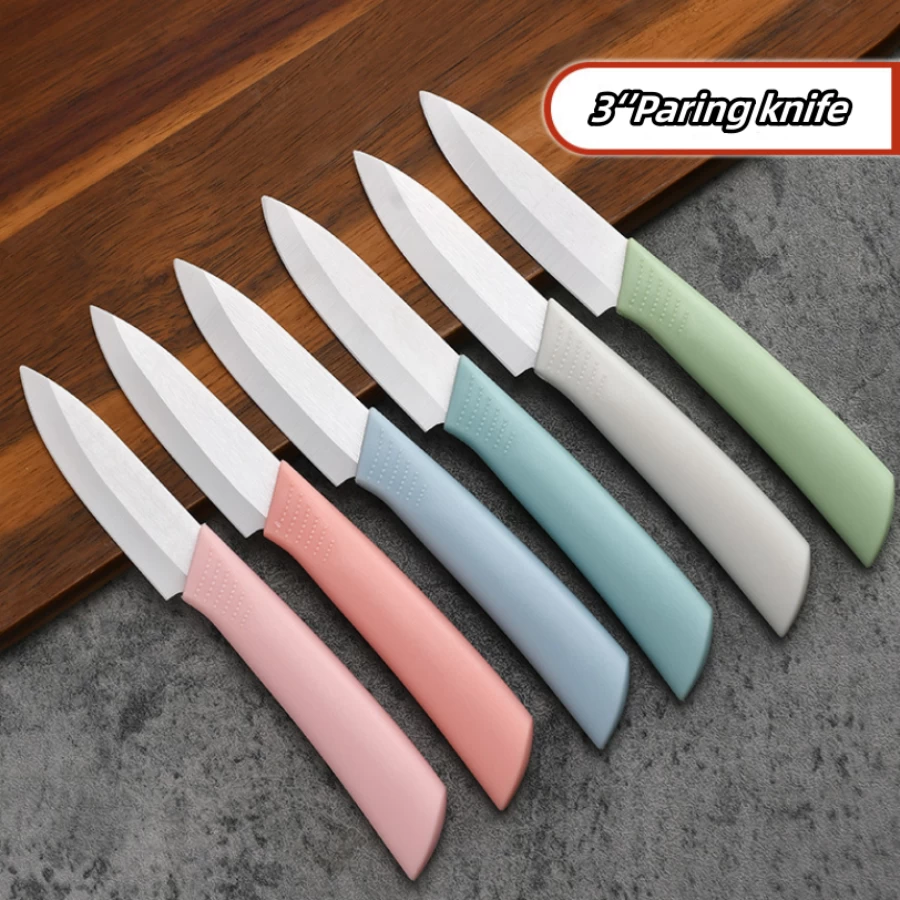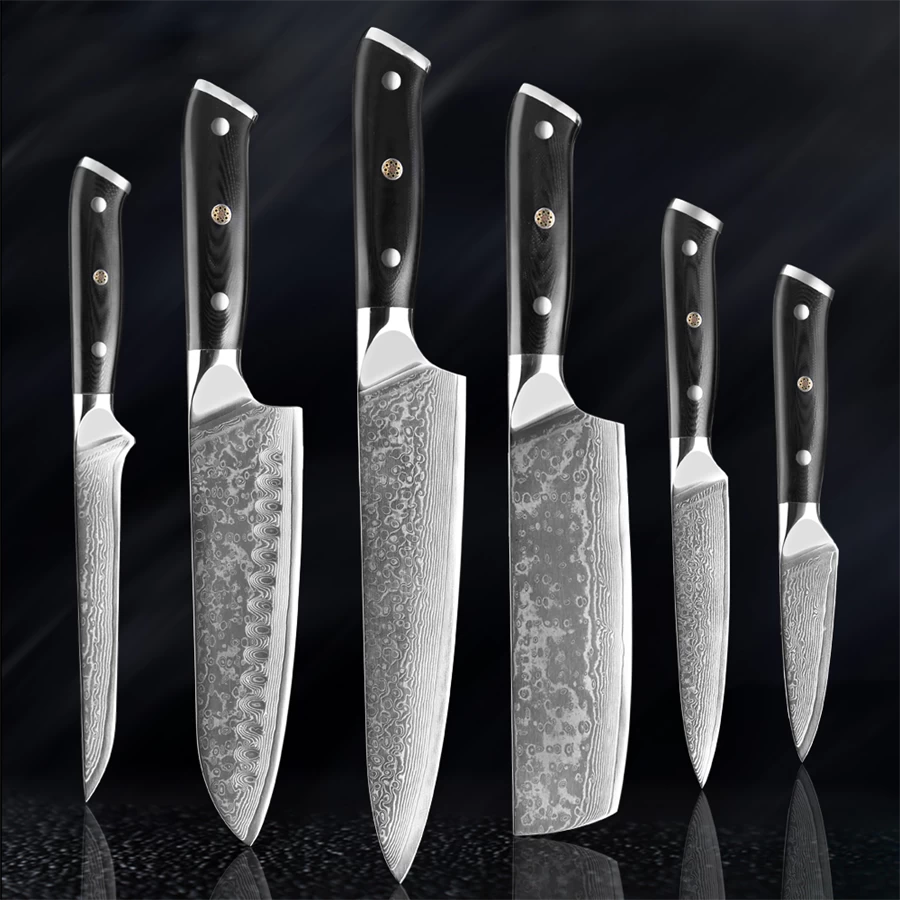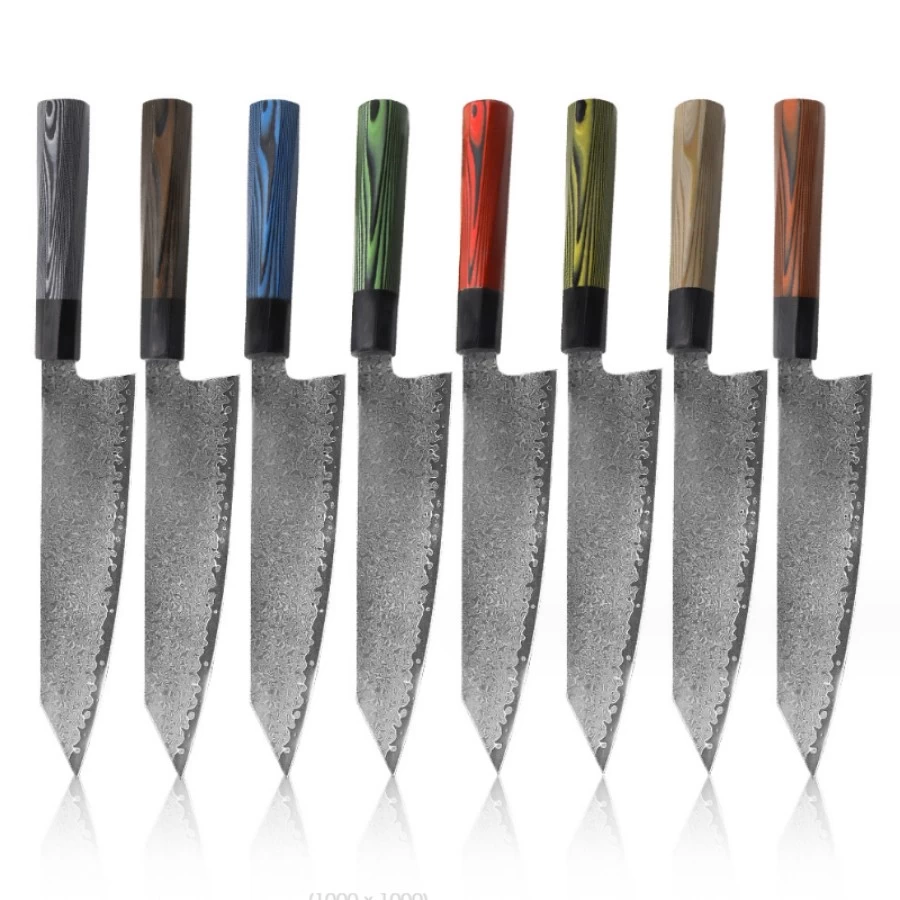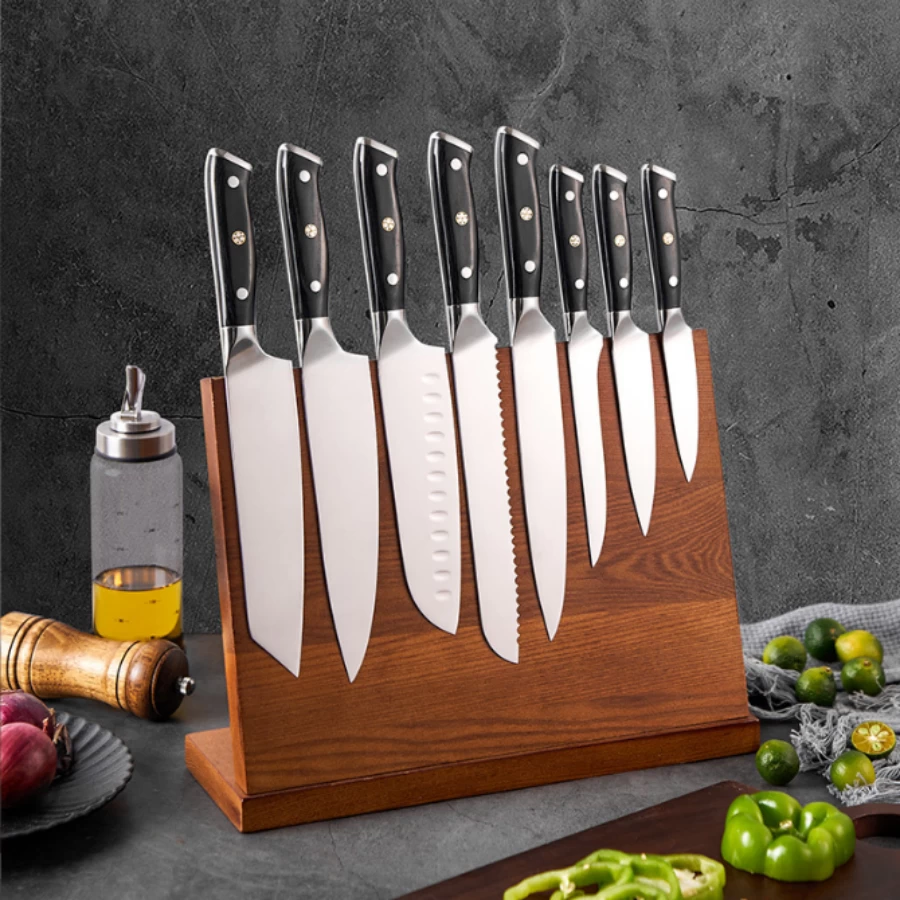The process of making a good chef’s knife
The process of making a good chef's knife usually involves the following steps:
1. Material selection: Choose high-quality steel as the blade material. Common choices include carbon steel and stainless steel. Kitchen knives made of inferior materials lack strength and durability and can break easily.
2. Blade Forging: A selected steel is heated to the appropriate temperature and then forged into the shape of the blade using a hammer. This process requires an experienced blacksmith to complete to ensure the uniformity and strength of the blade.
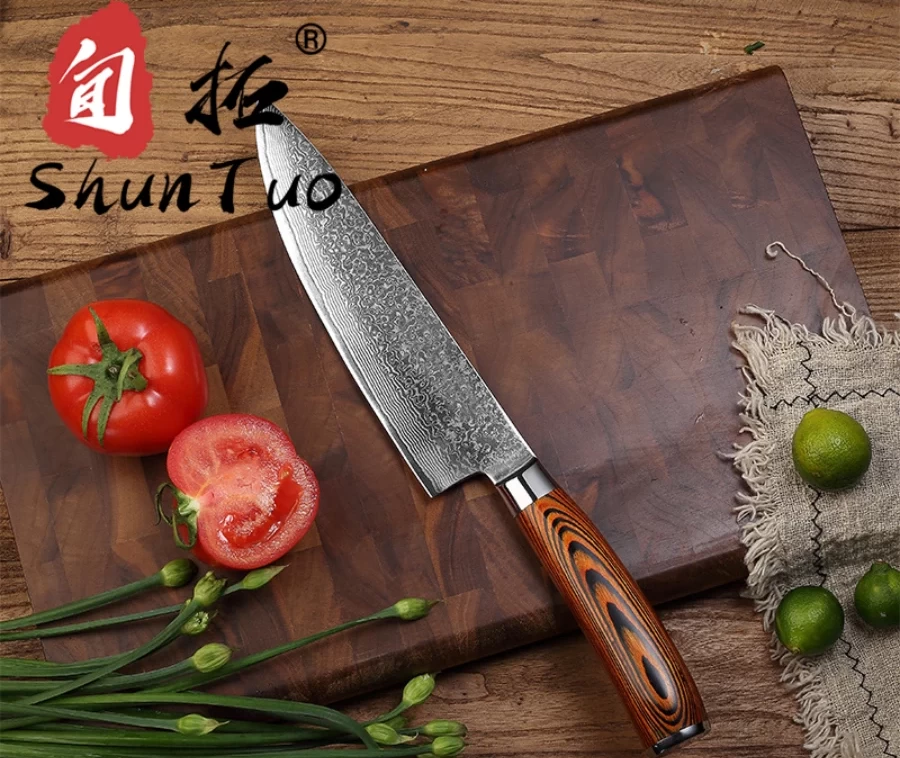
chef knife professional on sales
3. Blade quenching: The forged blade is heated to a high temperature and then cooled quickly to increase the hardness and durability of the blade. If the tool is not properly heat treated and cooled during the quenching manufacturing process, the tool can easily break, so this step is extremely important.
4. Blade sharpening: Using a whetstone or grinding wheel to sharpen the edge of a blade. This process requires careful manipulation to ensure the symmetry and sharpness of the blade.
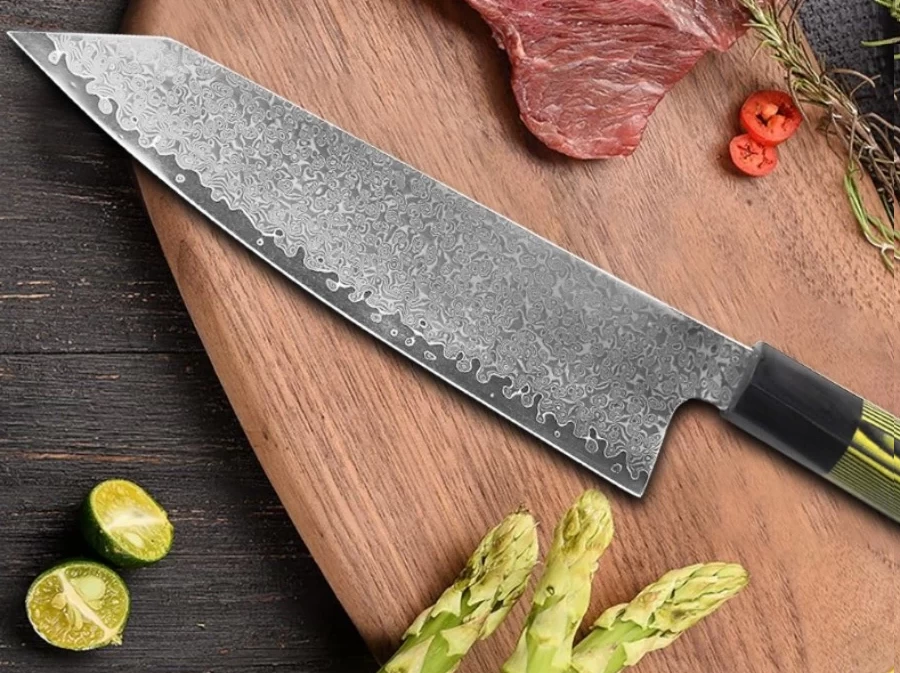
professional chef knife supplier
5. Handle making: Choose a suitable material (such as wood, plastic or metal) to make the handle and attach it to the blade. The handle of the knife should have a comfortable grip and a secure connection.
6. Handle installation: Attaching the handle to the blade, usually with glue or rivets.
7. Blade polishing: Use sandpaper or a whetstone to polish the surface of the blade to increase its smoothness and beauty.

